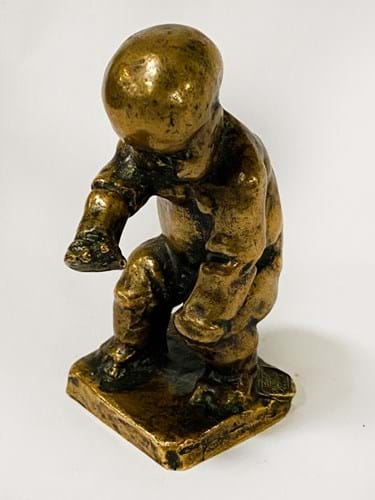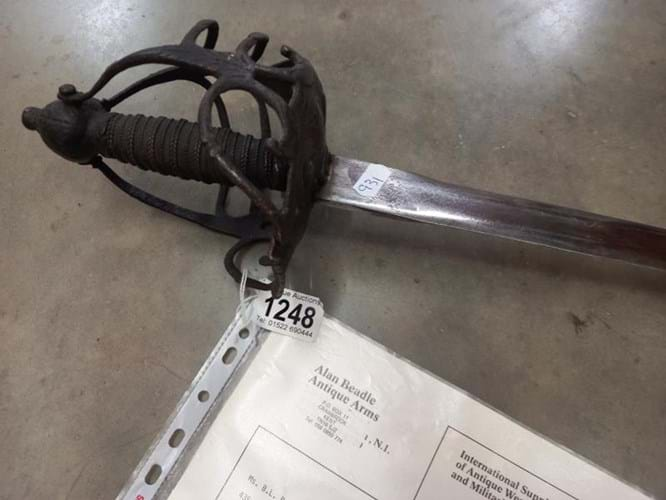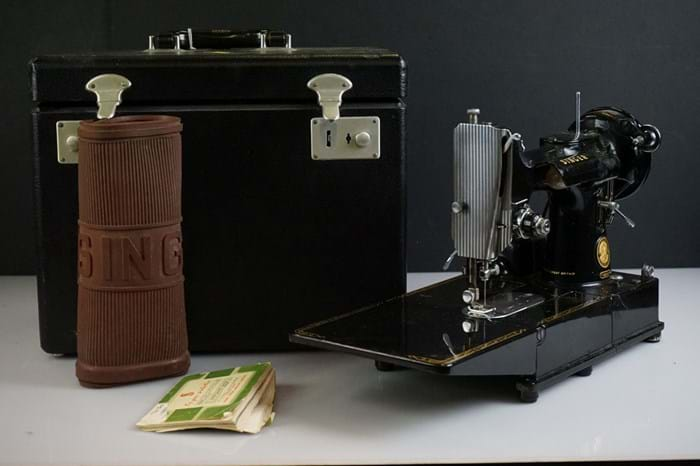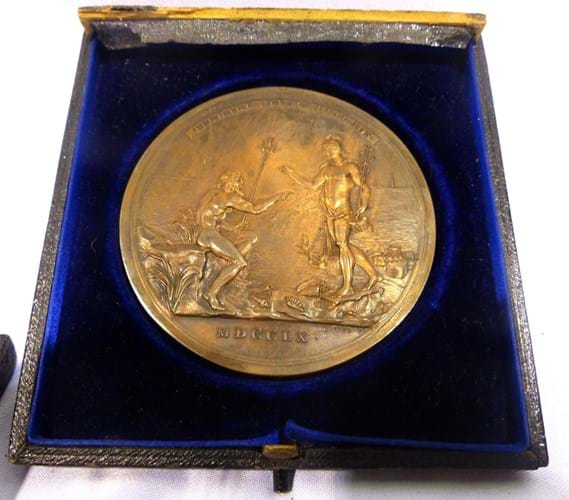
A bronze East India Company medal commemorating the record three-month voyage from Canton to London undertaken by Captain William Wilson in 1760 - £2800 at Warrington & Northwich Auction.
1. East India medal for Captain William Wilson
Although the box to this bronze medal is dated 1873 (leading the auctioneers to conclude it was Victorian) the piece itself was struck in 1760. That was the year The Pitt, a ship commanded by Captain William Wilson (1715-95), arrived from China in the River Thames on April 26, a full six months earlier than she had been expected. Wilson had taken a new route home (through the Molucca Islands to the north of New Guinea) by a course which was named Pitt's Straits. It had taken just three months. He was rewarded by the East India Company with a 100 guinea gold medal designed by the medallist and coin-engraver Richard Yeo (1720-79). The obverse shows Neptune seated on a rock as he points out to Mercury the quickest route to the riches of the East. The reverse records the discovery of an alternative route to China and the gratitude of the East India Company.
The bronze version of this medal is scarce and the subject matter gives it wider collecting appeal. Estimated at just £60-80 at Warrington & Northwich Auction in Warrington on October 25, it took £2800.
William Wilson was known for his wider naval exploits (he was promoted to Commodore after engaging two French frigates on another return trip from the East) and as farmer in Great Ayton, North Yorkshire invented a seed drill and levelling machine that caught the attention the famous agricultural writer Arthur Young.
2. Firsts Steps sculpture
A British subject born in Rio de Janeiro, Reginald Fairfax Wells (1877-1951), studied sculpture at the South Kensington School of Art in the 1890s and then studio pottery at Camberwell School of Arts and Crafts. Today considered one of the first true studio potters working on an entirely independent basis, he was also variously a sculptor, aircraft manufacturer and architect. This diminutive bronze of a child learning to walk is titled First Steps, a 4in (11cm) model first illustrated in the Studio Yearbook 1903 and again at the Sixth Exhibition of the International Society of Sculptors, Painters and Gravers in London, 1906. Signed in the cast and applied with a Valsuani foundry mark, it proved something of a sleeper when offered with a guide of £100-150 at Southgate Auction Room in north London on October 24. It made $1700 – a similar sum to a cast of this model with a mid-brown patination sold for £1800 at Lyon & Turnbull in Edinburgh in November 2020.
3. Silver goblet
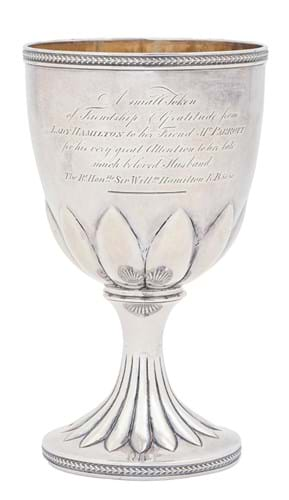
George III silver goblet with a presentation inscription from Emma Hamilton - £5000 at Mellors & Kirk.
This 11oz George III silver goblet by Solomon Hougham, London 1802 is engraved with an inscription that is key to its appeal. It reads A small Token of Friendship & Gratitude from Lady Hamilton to her Friend Mr Parrott for his very great attention to her late much beloved Husband the Rt Honble Sir Willm Hamilton KB.
The physician John Parrott (1764-1832) was a neighbour of the Hamiltons and Horatio Nelson when the trio were living in a loving menage-a-trois at Merton Place, Mitcham. During the Peace of Amiens from March 1802 to May 1803 Nelson spent much of his time at home – cherishing his time at "dear dear Merton". Sir William Hamilton had died in April 1803, having moved out of Merton Place to his own home in Piccadilly the previous month.
This goblet, perhaps an object Nelson himself commissioned for his de facto wife, was later passed from Parrott to his daughter and then to her son in-law Robert Kelham (1788-1862) of Bleasby Hall, Southwell, Nottinghamshire. It then came by descent to the vendor who offered it for sale at Mellors & Kirk in Nottingham on October 18. Of impeccable provenance and never previously offered for sale, it was guided at £5000-8000 and got away at the low estimate.
4. Civil War era mortuary sword
Estimated at just £60-90, this Civil War era mortuary sword sold for £2300 at Unique Auctions in Lincoln on October 22. The 1640s weapon with a straight double-edged blade, a pierced hilt with finely chased foliage and large masks to the guard, was last sold at Christie's auction at National Trust property Nostell Priory in 1990. During the English Civil War, the estate was owned by Sir John Wolstenholme, 1st Baronet (d. 1670) and the Wolstenholme family who were bankrupted by debts incurred to provide finance for the Royalist cause. It is possible this sword and others in the 1990 sale were part of Nostell’s defence.
5. Sewing machine
The Singer 222K Featherweight is rated as one of the best sewing machines ever made. Known as a ‘Free-Arm‘ or ‘Convertible‘ model, due to a feature that allowed a portion of the flat bedplate to be removed to allow sewing around sleeve cuffs or trouser legs, approximately 100,000 were made at the Kilbowie plant in Scotland between 1953 and 1961. Many have survived remarkably well and have become particularly desirable among the many sewing enthusiasts who enjoy the ‘vintage’ experience. The example at Wessex Auction Rooms in Chippenham on October 22 was in particularly good condition and included a range of accessories ‘extras’ including the original literature that was often lost or discarded. It was estimated at £20-30 but sold at £650.


